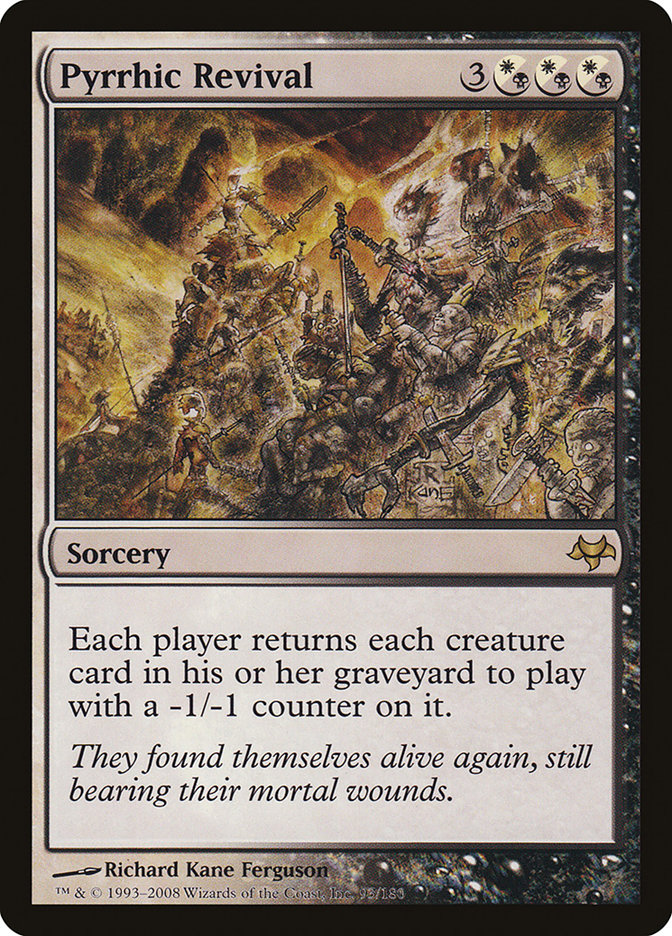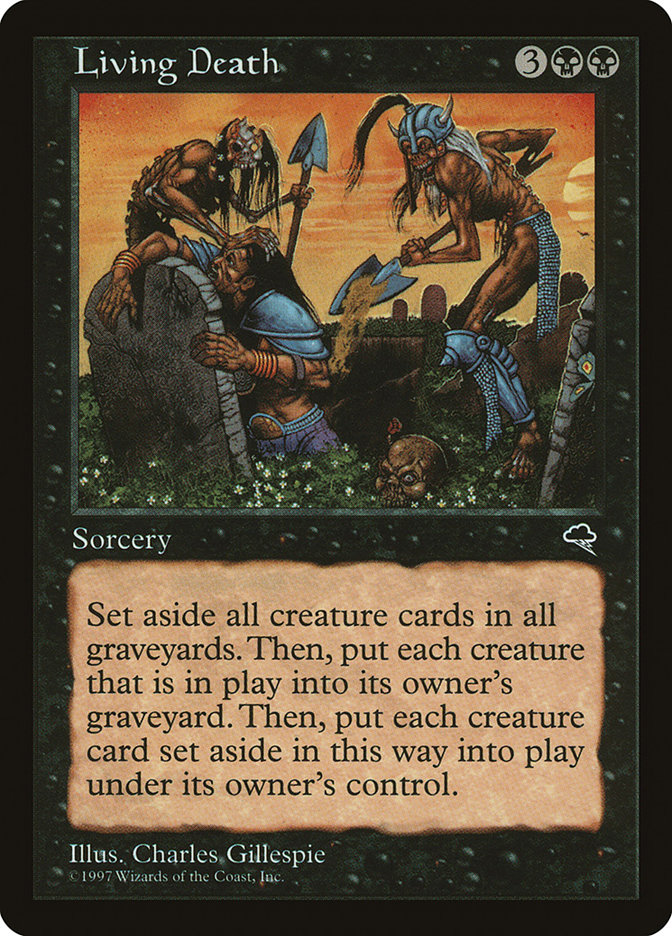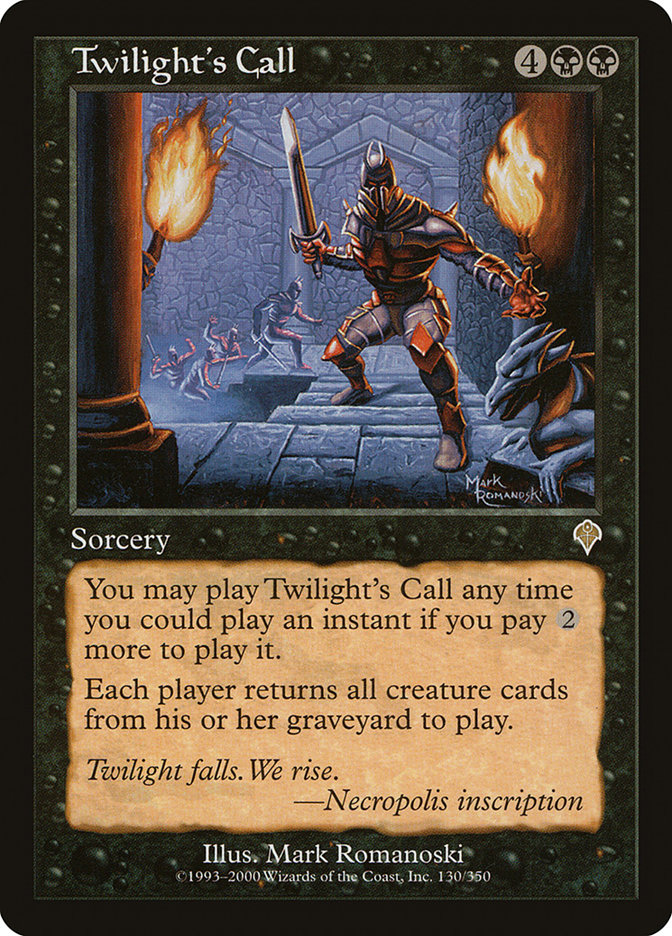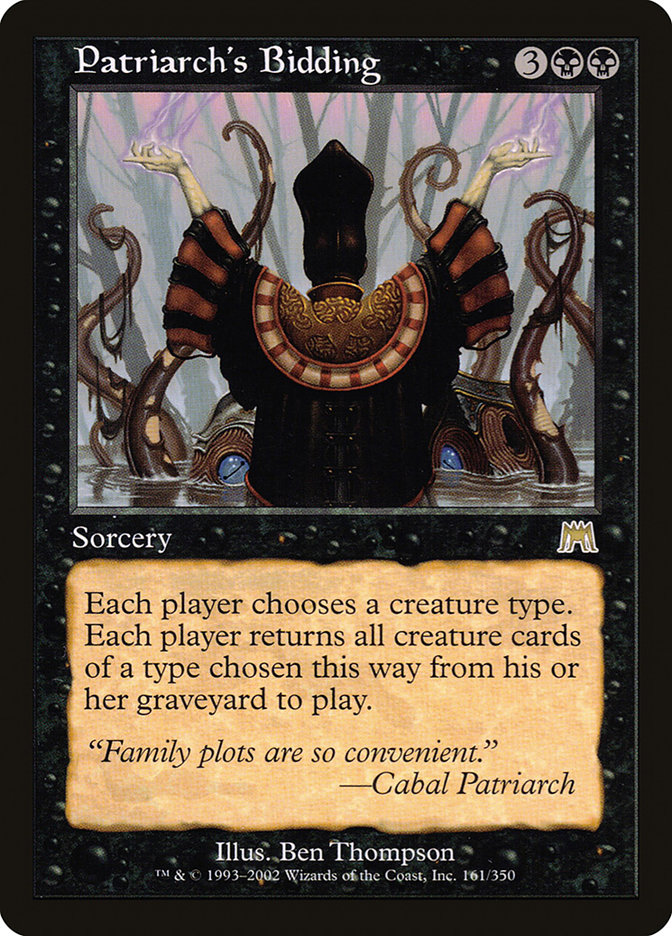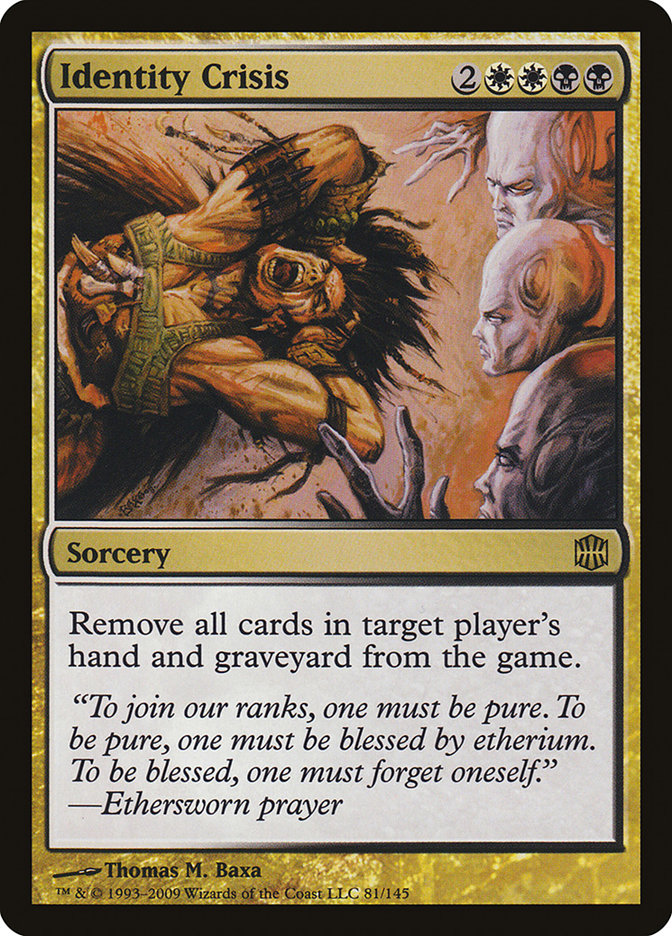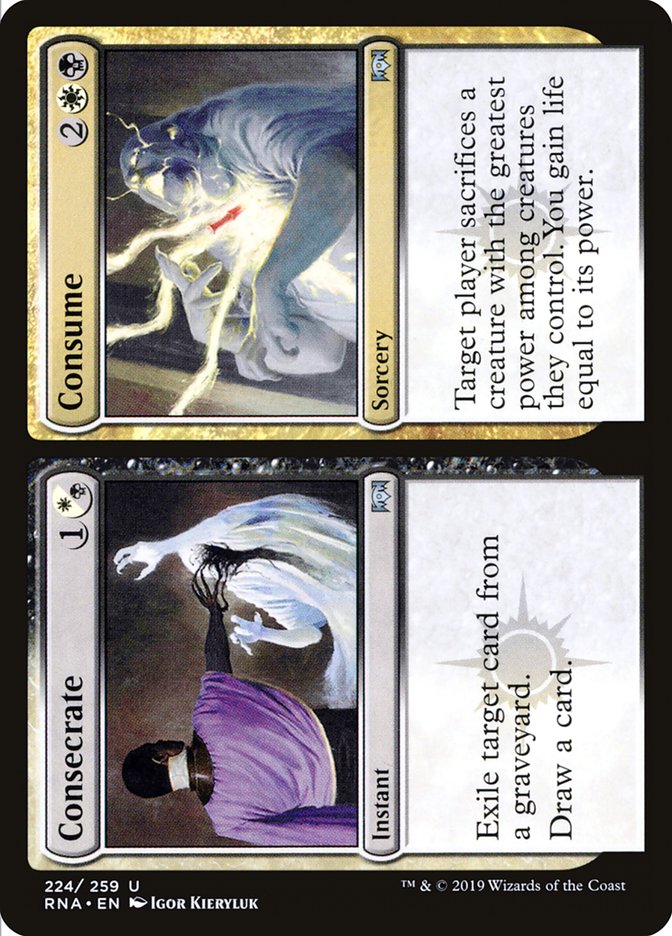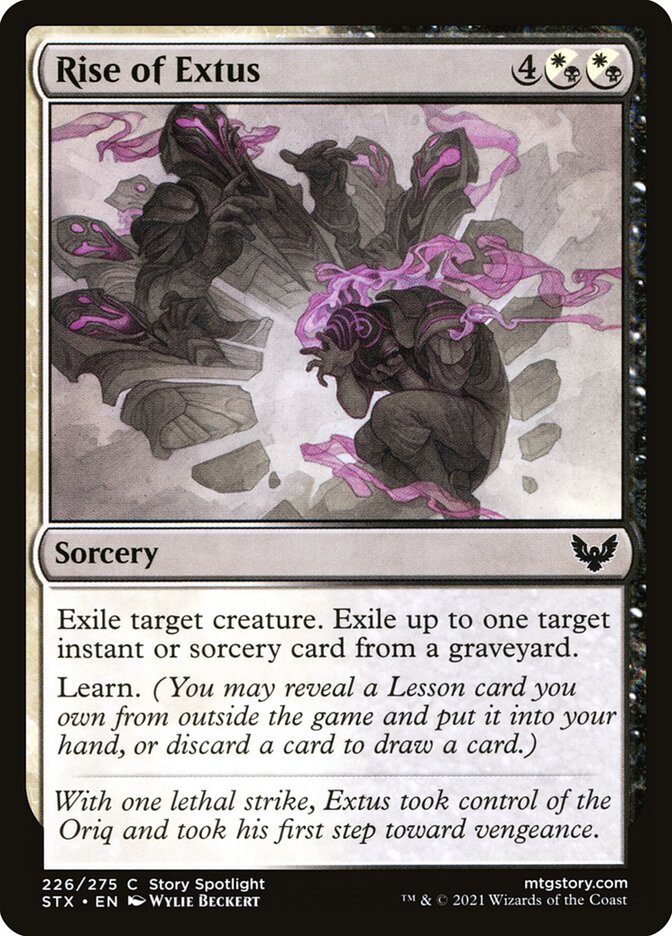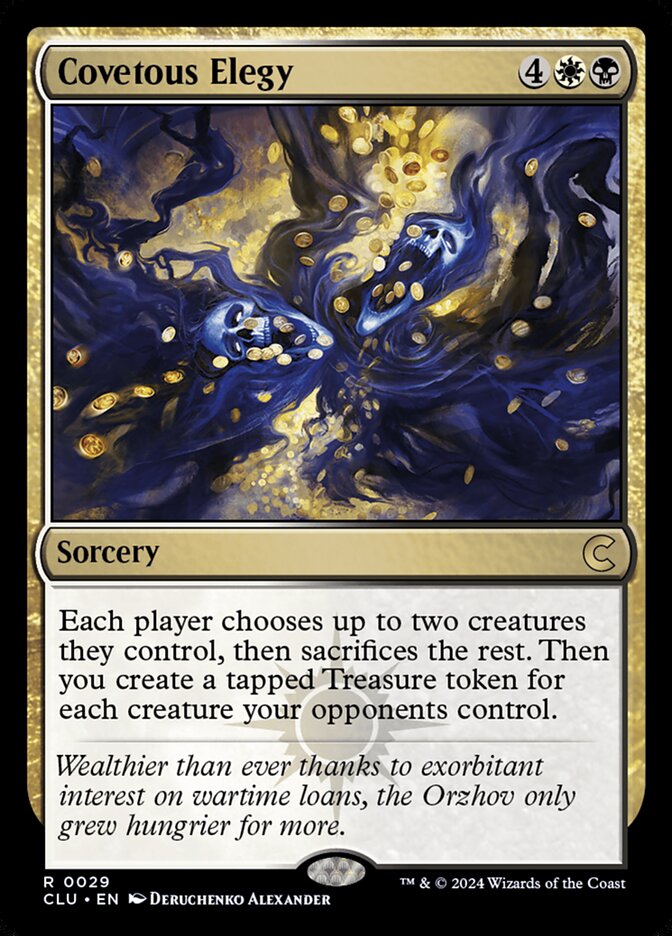Pyrrhic Revival MTG Card
| Mana cost | |
| Converted mana cost | 6 |
| Rarity | Rare |
| Type | Sorcery |
| Released | 2008-07-25 |
| Set symbol | |
| Set name | Eventide |
| Set code | EVE |
| Number | 93 |
| Frame | 2003 |
| Layout | Normal |
| Border | Black |
| Illustred by | Richard Kane Ferguson |
Text of card
Each player returns each creature card in his or her graveyard to play with a -1/-1 counter on it.
They found themselves alive again, still bearing their mortal wounds.
Cards like Pyrrhic Revival
Pyrrhic Revival stands out as a unique sorcery in Magic: The Gathering due to its ability to resurrect multiple creatures at a single stroke, echoing a mass reanimation theme found in cards such as Living Death. While Living Death swaps graveyard creatures with those on the battlefield, Pyrrhic Revival distinguishes itself by only targeting creatures with lesser converted mana costs, but without affecting those already in play.
Another comparable card is Twilight’s Call, which brings all creatures from the graveyard back to the battlefield. It offers a full graveyard return, albeit at a typically higher converted mana cost and without the specific limitations imposed by Pyrrhic Revival. Patriarch’s Bidding similarly revives selected creatures, although it restricts reanimation to a chosen creature type, making it a strategic choice in tribal decks but less versatile than Pyrrhic Revival when dealing with a more varied graveyard.
In weighing these cards against each other, Pyrrhic Revival may appeal to players who prefer a carefully balanced resurrection, avoiding the possibility of overextending and reviving opponents’ creatures. Such strategic consideration makes Pyrrhic Revival a unique thread in the tapestry of MTG reanimation cards.
Cards similar to Pyrrhic Revival by color, type and mana cost
Card Pros
Card Advantage: Pyrrhic Revival’s ability to return multiple creature cards from your graveyard to the battlefield can significantly shift the balance of cards in your favor, effectively increasing your on-board presence and potential plays per turn.
Resource Acceleration: Although Pyrrhic Revival itself doesn’t directly generate mana or ramp, its mass reanimation effect can quickly bring back creatures with mana abilities or other cost-reducing effects, thus accelerating your resource development indirectly.
Instant Speed: Pyrrhic Revival operates at sorcery speed. However, the sweeping effect it has on the game state often emulates the high-impact shift usually associated with instant speed plays, by dramatically altering the board in a single turn phase.
Card Cons
Discard Requirement: Pyrrhic Revival brings a unique dynamic to the battlefield, but it comes with a significant drawback. As part of its resolution, each player has to discard a card. This requirement may hinder your strategy, particularly if your hand is already running thin and you’re forced to part with a valuable asset at a critical time.
Specific Mana Cost: The flexibility of Pyrrhic Revival is somewhat hampered by its strict mana demands. It requires three white mana which can be challenging for multi-color decks that don’t focus heavily on white mana production. This can potentially restrict deck-building options and limit its integration into various strategies.
Comparatively High Mana Cost: With a mana cost of six, including three specific white mana, Pyrrhic Revival is a card that leans towards the expensive end of the mana spectrum. In games where tempo and efficiency are key, its cost may prove to be a disadvantage compared to other lower-cost options that can be played earlier or with greater frequency throughout a match.
Reasons to Include Pyrrhic Revival in Your Collection
Versatility: Pyrrhic Revival stands out for its ability to slot into diverse decks, particularly those revolving around graveyard strategies. It can turn the tide in your favor by reanimating key creatures from your graveyard simultaneously.
Combo Potential: With its mass resurrection effect, Pyrrhic Revival offers explosive combo opportunities. By returning a critical mass of creatures with enters-the-battlefield effects or death triggers, you can set up game-ending plays.
Meta-Relevance: As metagames often cycle through phases, a card like Pyrrhic Revival can be very effective in a meta with fewer graveyard hate cards. Its potential to quickly rebuild your board state makes it a formidable option against control-heavy decks that rely on attrition.
How to Beat Pyrrhic Revival
Understanding how Pyrrhic Revival can influence a match is crucial for strategizing against this potent card. This enchantment brings each player’s graveyard into the spotlight, resurrecting all creatures at the cost of halving their toughness. The key to countering Pyrrhic Revival lies in managing graveyard content and timing.
Bojuka Bog is an effective tool, exiling opponents’ graveyards and minimizing the impact of their revival. Tormod’s Crypt serves a similar purpose, offering an easily accessible means to purge a targeted opponent’s creature-laden graveyard. Timing is paramount; deploying these cards after Pyrrhic Revival is on the stack ensures maximum disruption.
Spot removal and sweepers are also valuable post-revival. By waiting for creatures to return with diminished toughness, cards like Pyroclasm or Doom Blade can provide efficient board control. Keep in mind that your graveyard will also be affected, so strategic discarding or sacrificial plays may shape the outcome.
Ultimately, deck construction with a focus on graveyard interaction or denial can prevent Pyrrhic Revival from dictating the game’s pace. Adaptability and anticipation are your best allies in overcoming the challenges brought by this intricate MTG card.
Where to buy
If you're looking to purchase Pyrrhic Revival MTG card by a specific set like Eventide, there are several reliable options to consider. One of the primary sources is your local game store, where you can often find booster packs, individual cards, and preconstructed decks from current and some past sets. They often offer the added benefit of a community where you can trade with other players.
For a broader inventory, particularly of older sets, online marketplaces like TCGPlayer, Card Kingdom and Card Market offer extensive selections and allow you to search for cards from specific sets. Larger e-commerce platforms like eBay and Amazon also have listings from various sellers, which can be a good place to look for sealed product and rare finds.
Additionally, Magic’s official site often has a store locator and retailer lists for finding Wizards of the Coast licensed products. Remember to check for authenticity and the condition of the cards when purchasing, especially from individual sellers on larger marketplaces.
Below is a list of some store websites where you can buy the Pyrrhic Revival and other MTG cards:
 BUY NOW
BUY NOW BurnMana is an official partner of TCGPlayer
- eBay
- Card Kingdom
- Card Market
- Star City Games
- CoolStuffInc
- MTG Mint Card
- Hareruya
- Troll and Toad
- ABU Games
- Card Hoarder Magic Online
- MTGO Traders Magic Online
See MTG Products
Legalities
Magic the Gathering formats where Pyrrhic Revival has restrictions
| Format | Legality |
|---|---|
| Commander | Legal |
| Legacy | Legal |
| Modern | Legal |
| Oathbreaker | Legal |
| Vintage | Legal |
| Duel | Legal |
| Predh | Legal |
| Penny | Legal |
Rules and information
The reference guide for Magic: The Gathering Pyrrhic Revival card rulings provides official rulings, any errata issued, as well as a record of all the functional modifications that have occurred.
| Date | Text |
|---|---|
| 2008-08-01 | Pyrrhic Revival can cause creatures to be put onto the battlefield that have 0 toughness due to the -1/-1 counter from this effect. Those creatures are put right back into their owners’ graveyards as a state-based action. No spells or abilities that would remove counters or otherwise affect those creatures can be cast or activated before that happens. Still, the creatures did momentarily pop onto the battlefield, so any relevant triggered abilities (including their own enters-the-battlefield or leaves-the-battlefield abilities) will trigger. They’ll be put on the stack after state-based actions are checked. |
